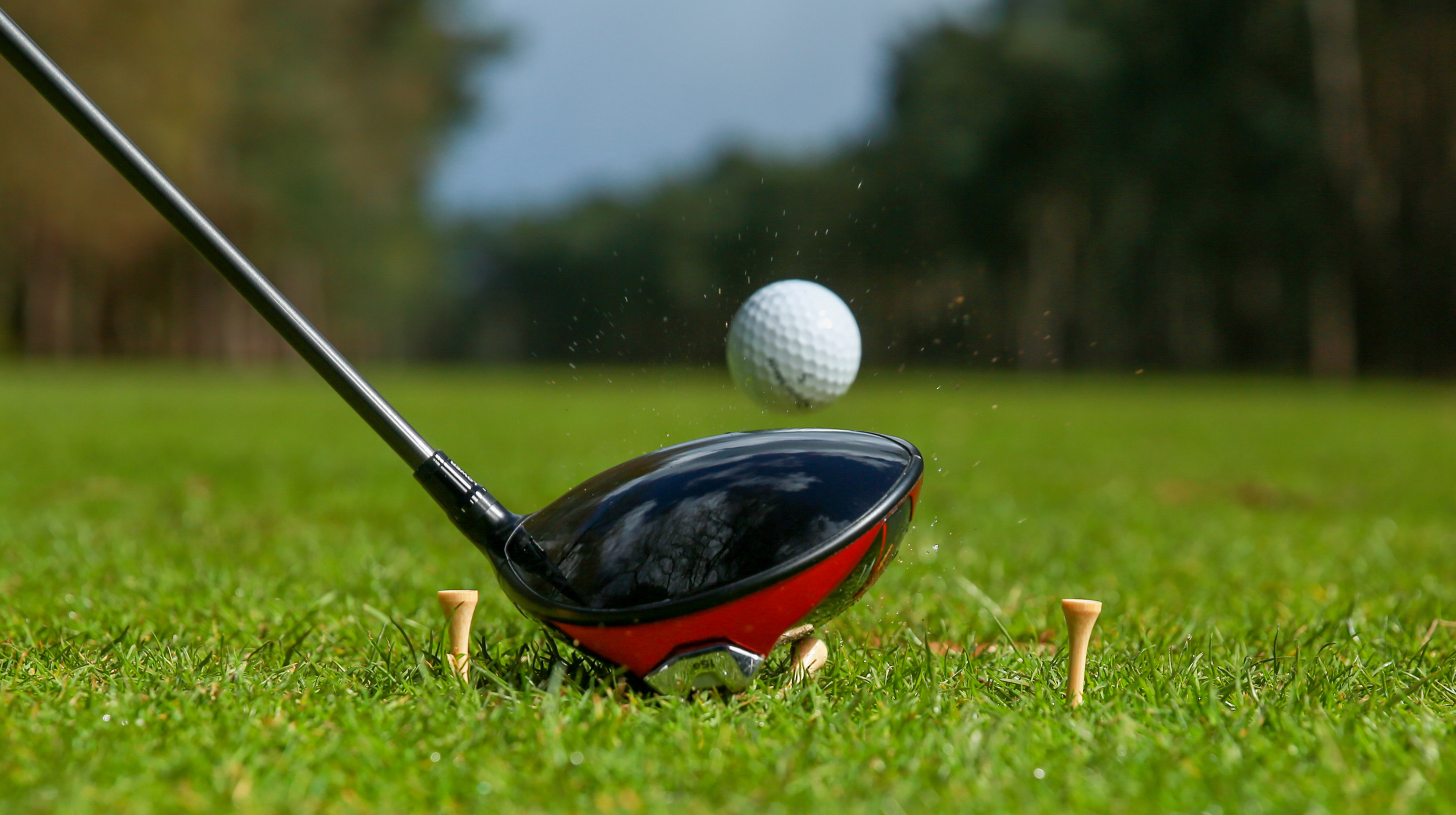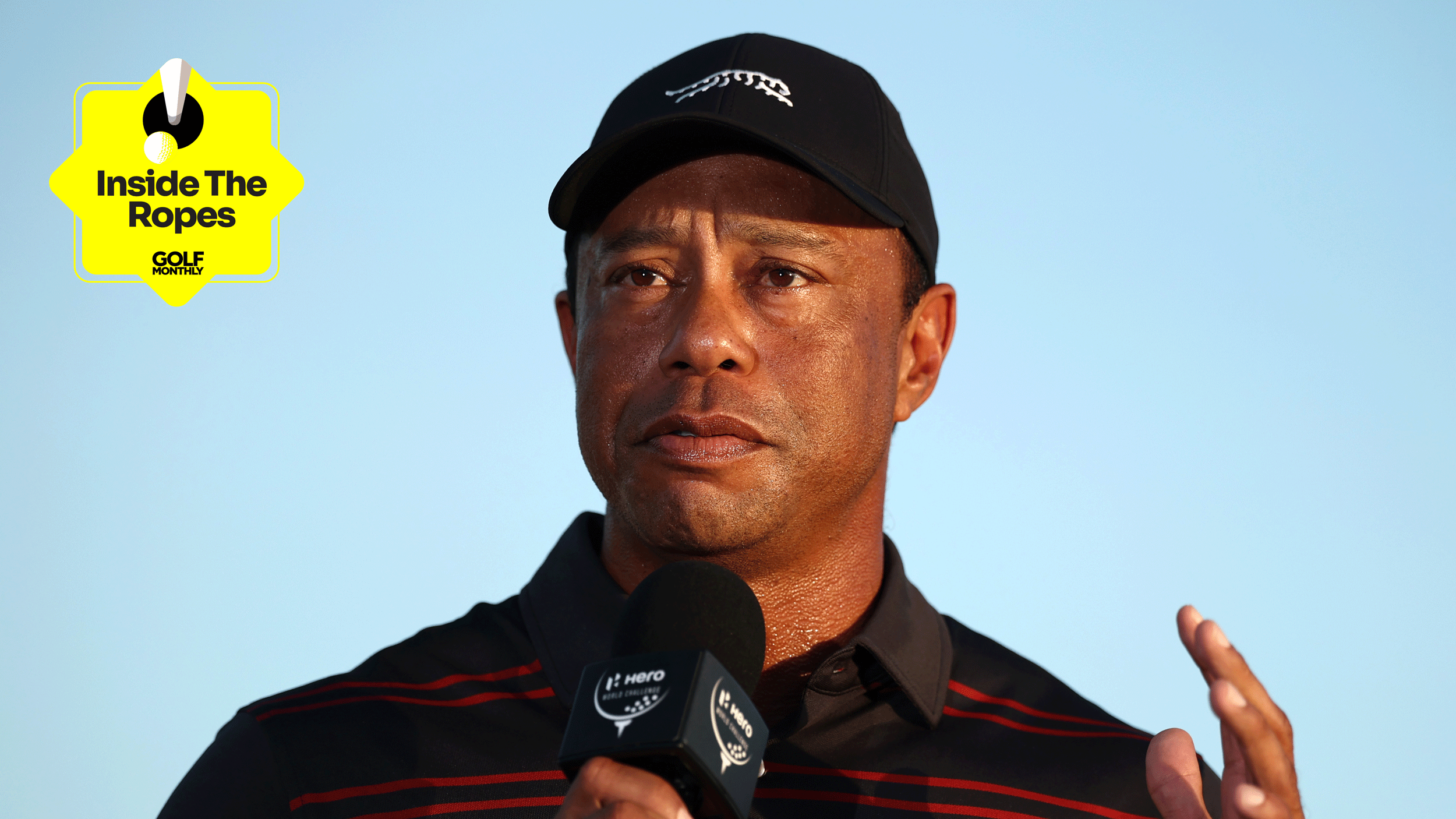What Does Forgiveness Mean In Golf?
In this video, Dan Grieve explains the meaning of forgiveness in golf and offers some advice on how to improve your strike


We hear a lot about ‘forgiveness’ in golf, but what does it actually mean? In this video below, PGA pro Dan Grieve shows you what we're talking about. It's a topic closely related to strike location, and Dan also has some tips for how to find the centre of the clubface on a more consistent basis.
If you look at my strike points below (I’ve applied some foot spray), you can see that I’ve used pretty much all of the clubface, yet all but one or two landed on the fairway – and they went a good distance, too. That, in a nutshell, is forgiveness. I’ve found the heel, the toe, and one was a little high in the face, but I’ve got the ball off the tee and, in most cases, safely on the short grass.

Modern drivers help the ball to travel further and on a better line even when you don't find the center of the face
If I’d struck the ball so inconsistently 20 or so years ago, I might have missed the clubface with some of these shots. However, the best drivers in the modern game (I play the TaylorMade Stealth 2 driver) have a much bigger sweetspot, a lot of which is due to the weight positioning in the back of the clubhead.
We’d love to hit it out of the middle every time, but not even the best players in the world do that. It’s important to be realistic. Technology is a great help and can help those mishits to go a lot further than they used to.
Still, those strikes that find the centre of the face are what we’re aiming for. There’s only so much technology can help and if you are getting really off with your strike, I’d recommend trying this simple drill.
Pop three tees down (see below). This acts as a gateway to hit through and give you feedback on heel and toe strikes. The idea is to sweep the ball away without hitting either the left (toe strike) and right (heel) tees.

This simple drill will help you to improve your strike
This leads onto the subject of strike location, as well as how to avoid slicing the ball and how to stop hooking the ball, both of which I can offer a few must-try tips and drills for, as well as how to drive the ball long and straight. Forgiveness in golf has come a long way, but finding the centre of the face is something we should all still strive for.
Subscribe to the Golf Monthly newsletter to stay up to date with all the latest tour news, equipment news, reviews, head-to-heads and buyer’s guides from our team of experienced experts.

Location: Woburn GC
Dan is one of the leading coaches in the UK, a Fellow of the PGA and a short-game virtuoso. He has had considerable success with a collection of tour pros, helping them to Order of Merit titles and major victories, and his Short Game School is the most attended in the UK. His students, past and present, include Charley Hull, Georgia Hall, Inci Mehmet and Iona Stephen.
Most common problem:
Swing – over the top , help by getting the basics correct at address and making them aware how to get the club online coming down.
Short game – creating spin and feel around the greens, help by educating on what the short game actually is (weak on purpose) and understand bounce and how they can apply it to different lies/situations.
Greatest success story:
Helping Georgia Hall from World No. 450 to No. 6 and winning a Major, two Order of Merits and Solheim Cup appearances.
Greatest teacher:
Alex Hay was a great influence during my first few years at Woburn. In sport more generally Sir Clive Woodward has taught me how to deliver at the highest level.
Most common fault:
Flipped right hand (hands behind the ball). Understand a correct coil/load going back and how to sequence better coming down so the chest opens up and gives the arms space to deliver a stronger impact. Lots of body action drills to enhance the feel, with and without the ball.
-
 Callaway Is Offering Up To 30% Off Pre-Owned Clubs - Here Are Five Of The Best Deals We've Spotted
Callaway Is Offering Up To 30% Off Pre-Owned Clubs - Here Are Five Of The Best Deals We've SpottedGolfers can upgrade for less as Callaway slashes prices on its inspected and certified used equipment.
-
 Can Tiger Woods Still Win Or Is Retirement Calling? What Is Left Of The 15-Time Major Champion's Career?
Can Tiger Woods Still Win Or Is Retirement Calling? What Is Left Of The 15-Time Major Champion's Career?As Tiger Woods turns 50 years old, four Golf Monthly writers discuss what is left of his playing career and whether he can win again or retirement is calling